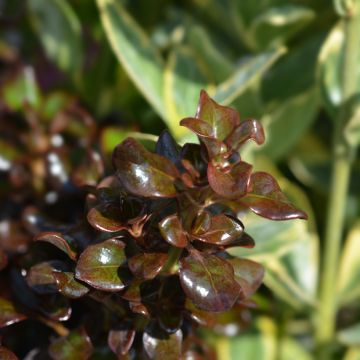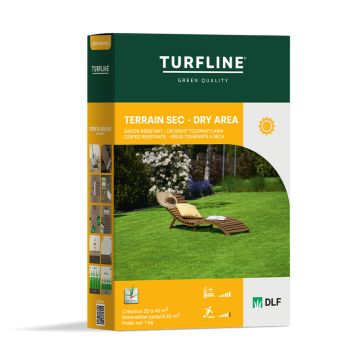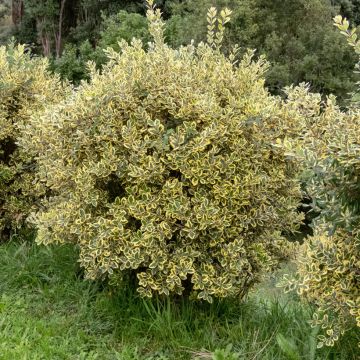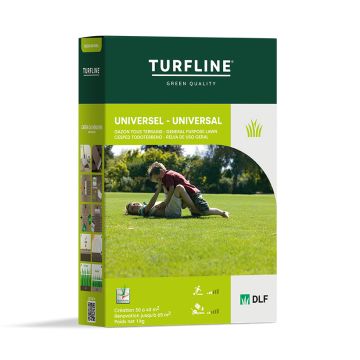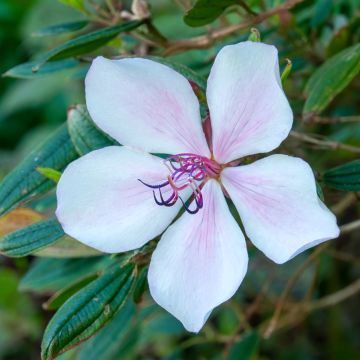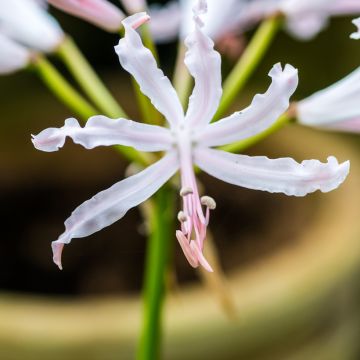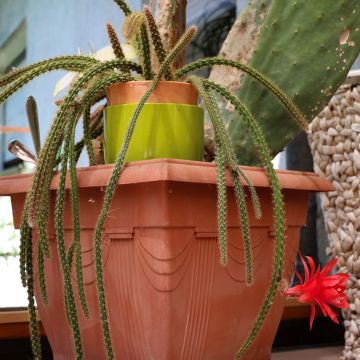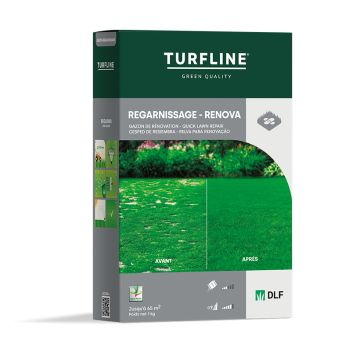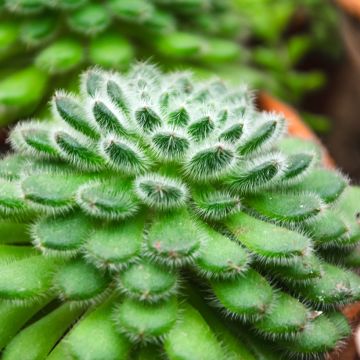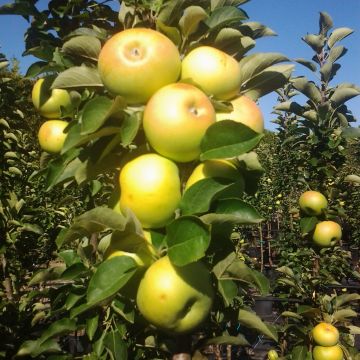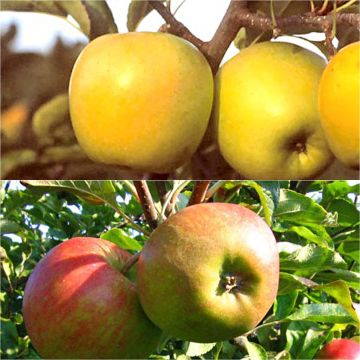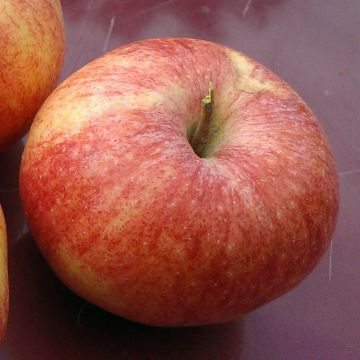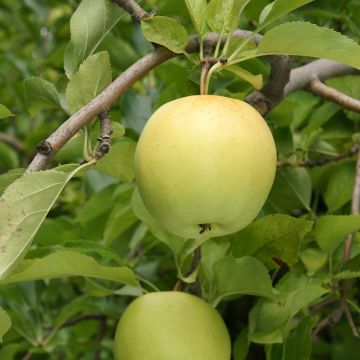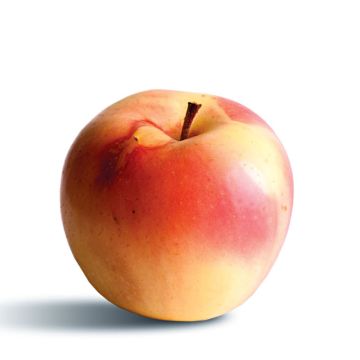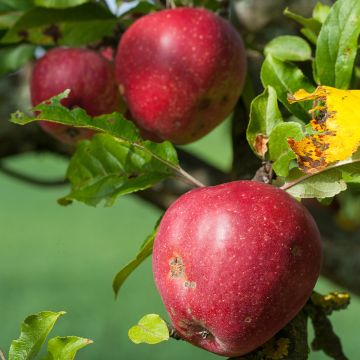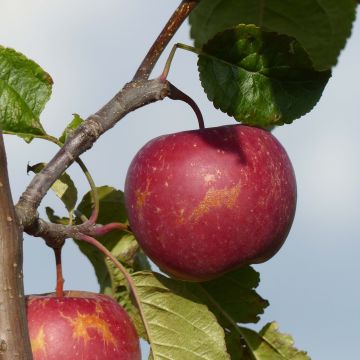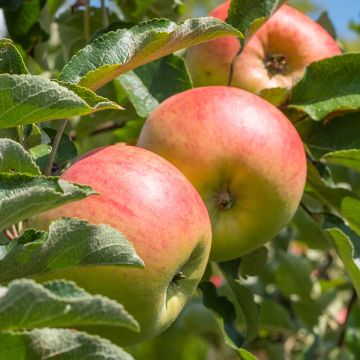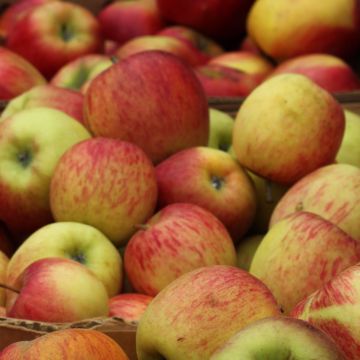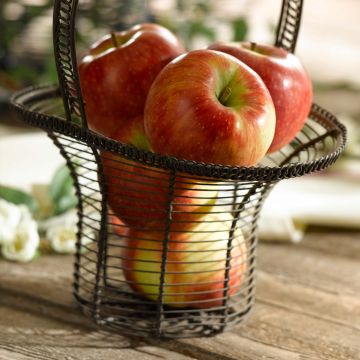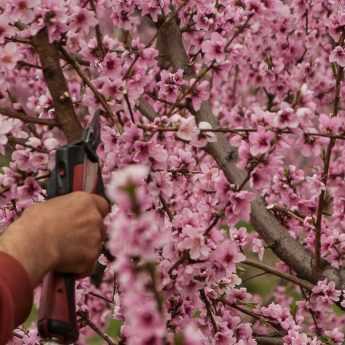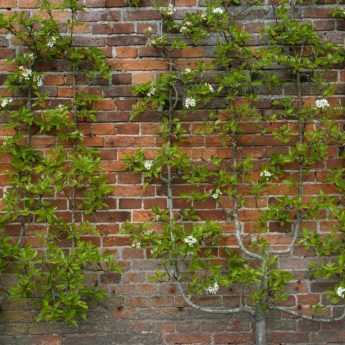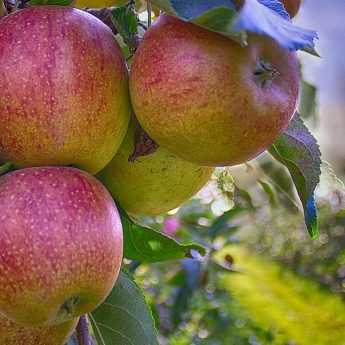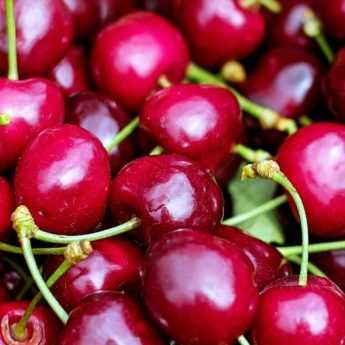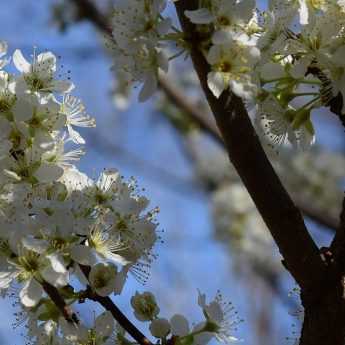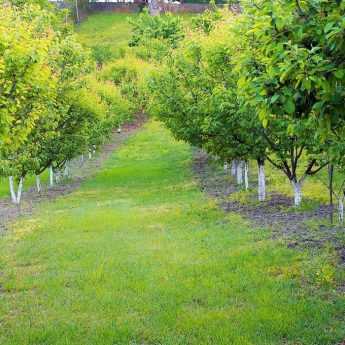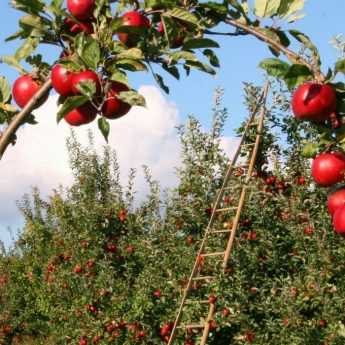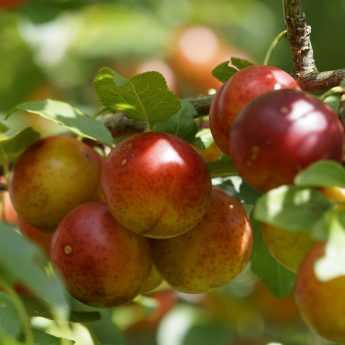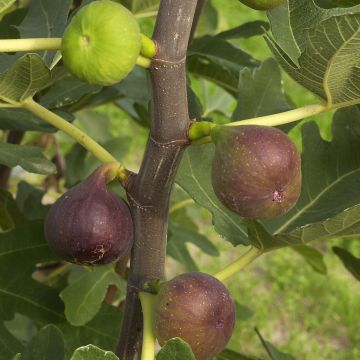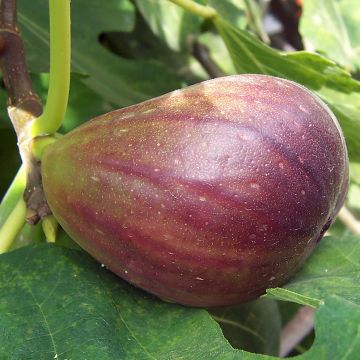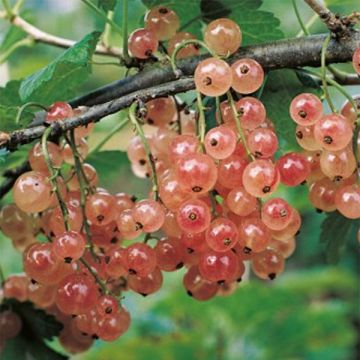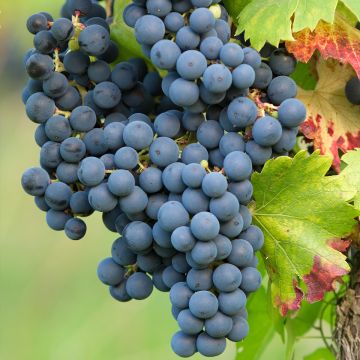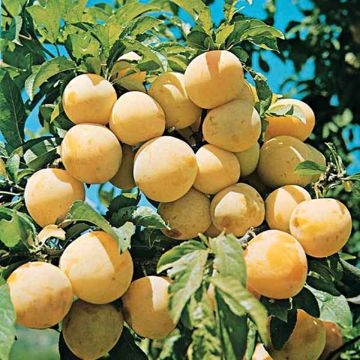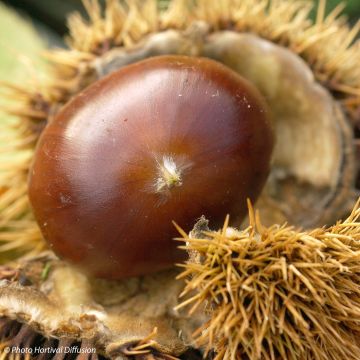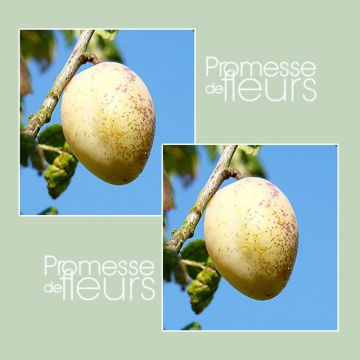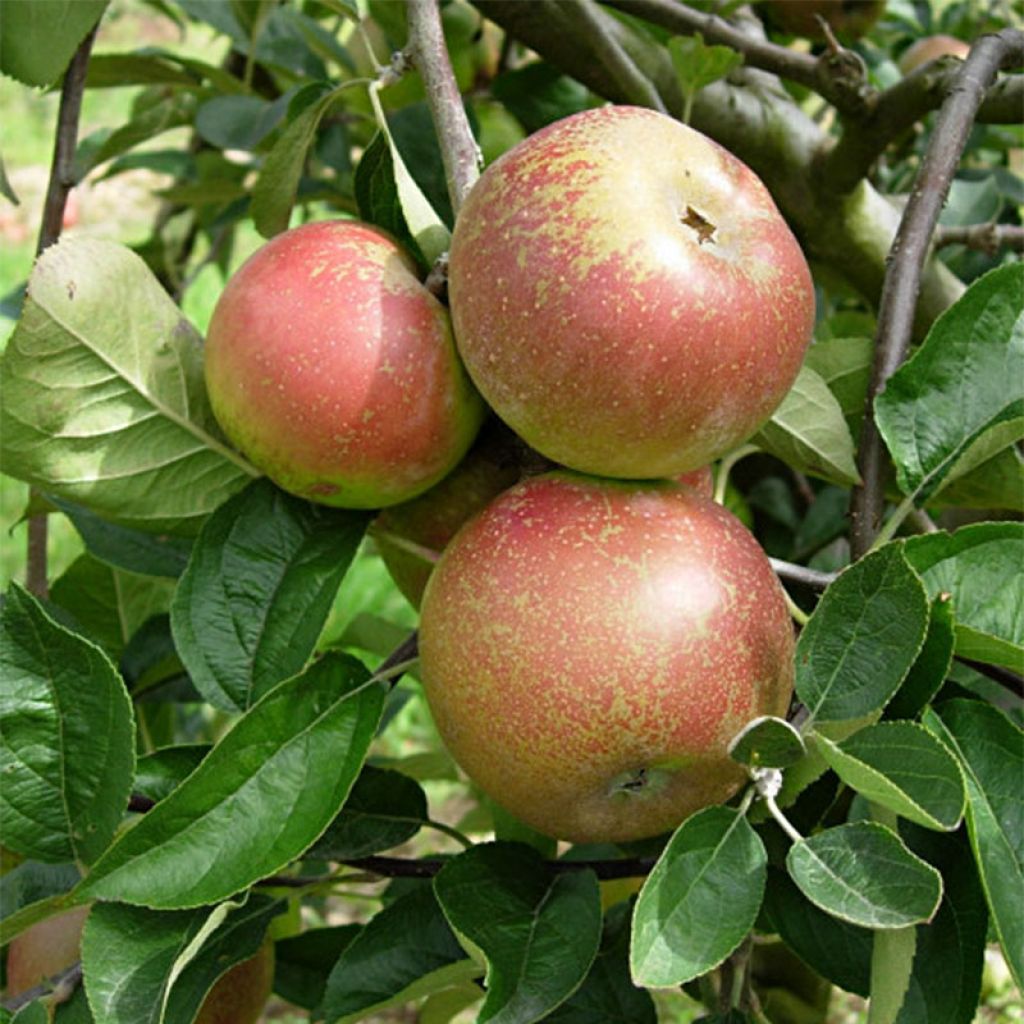

Pommier Reinette d'Armorique
Apple Tree Reinette dArmorique - Malus domestica
Malus domestica Reinette d'Armorique
Apple, Orchard apple, Table apple, Cultivated apple
Why not try an alternative variety in stock?
View all →This plant carries a 6 months recovery warranty
More information
We guarantee the quality of our plants for a full growing cycle, and will replace at our expense any plant that fails to recover under normal climatic and planting conditions.
From €7.90 for pickup delivery and €6.90 for home delivery
Express home delivery from €8.90.
Oversize package: home delivery by special carrier from €6.90 per order..
Express home delivery from €8.90.
Description
The 'Reinette d'Armorique' Apple Tree is a hardy variety, of medium vigor and fertile. It produces fruits with an average diameter of 6.5 to 7 cm (3in), round, yellow washed with carmine red, marbled with cork and stained with rough brown. Their flesh is white-yellow, fine, acidic, crisp, dense and fragrant. The harvest takes place in November and the fruits are consumed from January, when they reach ripeness, until June. The 'Reinette d'Armorique' Apple Tree is not self-fertile.
The apple tree is a native tree in Europe, and especially in France where its presence has been documented since antiquity. The 'Reinette d'Armorique' Apple Tree is a very old variety cultivated in western France for centuries.
It is a tree with a trailing habit, giving a very elegant weeping appearance. It has regular and uniform productivity. In case of high productivity, thinning is necessary to avoid small fruit size and the occurrence of diseases. Its foliage is composed of very large, ovate, slightly hairy leaves, dark green above and whitish green below, deeply toothed. The white flowering occurs late, in May. The flowering is not afraid of frost. The apple tree is therefore suitable for cultivation in all regions. Self-sterile, the presence of apple trees whose flowering occurs at the same time is necessary. The varieties 'Golden Delicious', 'Idared',and 'Reine des reinettes' are more suitable. The harvest takes place in November and the fruits are consumed from January, when they reach ripeness, until June. They keep very well when stored cool. The fruits, with an average diameter of 6.5 to 7 cm (3in), are round, yellow washed with carmine red, marbled with cork and stained with rough brown. Their flesh is white-yellow, fine, acidic, crisp, dense and fragrant.
These apples are particularly good for eating fresh. They can of course be used in pastries, jams, jellies or in savory dishes, in combination with cheese for example.
Apple Tree Reinette dArmorique - Malus domestica in pictures
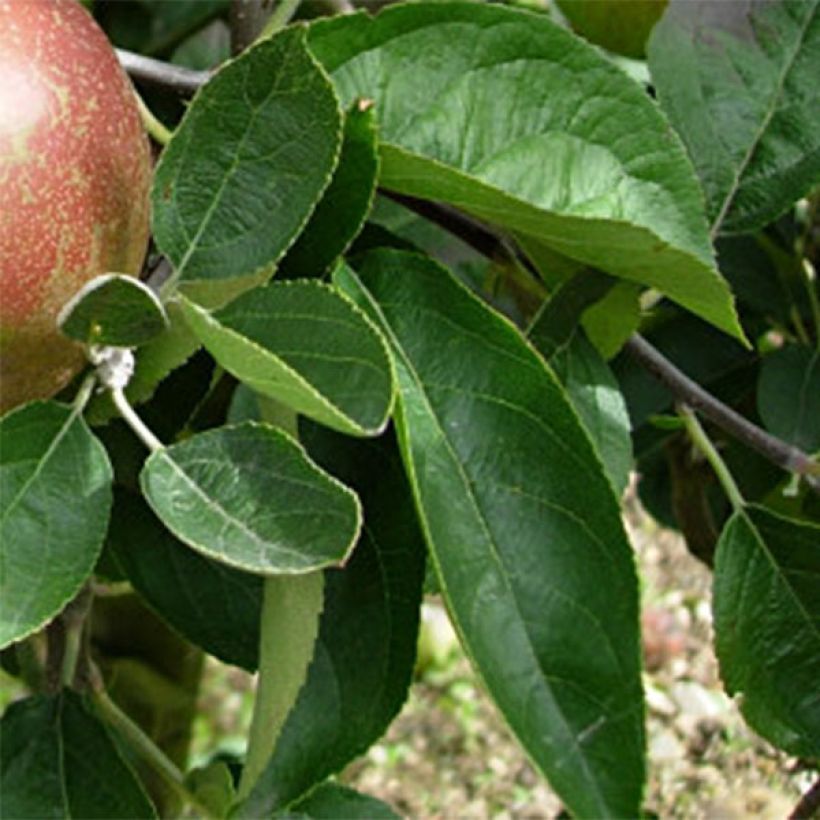

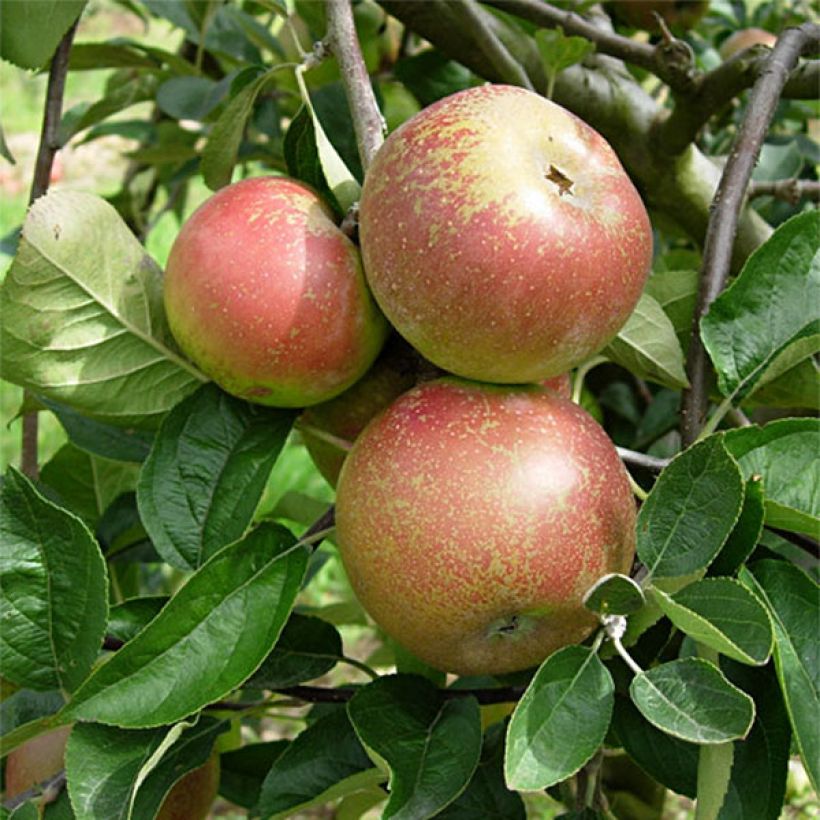

Plant habit
Fruit
Flowering
Foliage
Botanical data
Malus
domestica
Reinette d'Armorique
Rosaceae
Apple, Orchard apple, Table apple, Cultivated apple
Cultivar or hybrid
Other Apple trees
View all →Planting and care
Choose a well-sunny location for your 'Reinette d'Armorique' Apple tree; the soil can be slightly chalky or acidic but without excess. Dig a wide planting hole at least three times the volume of the root ball. Simultaneously, organic matter (topsoil, compost, etc.) and a base fertiliser such as bonemeal should be added. Do not bury the graft collar. Stake if necessary. Water abundantly, even in winter, even if it rains. Fruit trees are ideally planted between October and March, outside of the freezing period. Container-grown plants can be planted all year round except during extreme heat or frost periods.
In winter, you can add a small handful of wood ash, rich in potash, to improve fruiting. Watch out for potential aphid attacks during the season. A white powdery mildew caused by a fungus, powdery mildew, may appear on the leaves in summer, but it does not harm fruit development in gardens. Harvest takes place in September. Only keep picked fruits for storage. Apples should be stored with the stem downwards, on shelves or crates. Choose a location preferably completely dark, dry, and cool but frost-free.
Planting period
Intended location
Care
Planting & care advice
This item has not been reviewed yet - be the first to leave a review about it.
Ancient and local varieties
Haven't found what you were looking for?
Hardiness is the lowest winter temperature a plant can endure without suffering serious damage or even dying. However, hardiness is affected by location (a sheltered area, such as a patio), protection (winter cover) and soil type (hardiness is improved by well-drained soil).

Photo Sharing Terms & Conditions
In order to encourage gardeners to interact and share their experiences, Promesse de fleurs offers various media enabling content to be uploaded onto its Site - in particular via the ‘Photo sharing’ module.
The User agrees to refrain from:
- Posting any content that is illegal, prejudicial, insulting, racist, inciteful to hatred, revisionist, contrary to public decency, that infringes on privacy or on the privacy rights of third parties, in particular the publicity rights of persons and goods, intellectual property rights, or the right to privacy.
- Submitting content on behalf of a third party;
- Impersonate the identity of a third party and/or publish any personal information about a third party;
In general, the User undertakes to refrain from any unethical behaviour.
All Content (in particular text, comments, files, images, photos, videos, creative works, etc.), which may be subject to property or intellectual property rights, image or other private rights, shall remain the property of the User, subject to the limited rights granted by the terms of the licence granted by Promesse de fleurs as stated below. Users are at liberty to publish or not to publish such Content on the Site, notably via the ‘Photo Sharing’ facility, and accept that this Content shall be made public and freely accessible, notably on the Internet.
Users further acknowledge, undertake to have ,and guarantee that they hold all necessary rights and permissions to publish such material on the Site, in particular with regard to the legislation in force pertaining to any privacy, property, intellectual property, image, or contractual rights, or rights of any other nature. By publishing such Content on the Site, Users acknowledge accepting full liability as publishers of the Content within the meaning of the law, and grant Promesse de fleurs, free of charge, an inclusive, worldwide licence for the said Content for the entire duration of its publication, including all reproduction, representation, up/downloading, displaying, performing, transmission, and storage rights.
Users also grant permission for their name to be linked to the Content and accept that this link may not always be made available.
By engaging in posting material, Users consent to their Content becoming automatically accessible on the Internet, in particular on other sites and/or blogs and/or web pages of the Promesse de fleurs site, including in particular social pages and the Promesse de fleurs catalogue.
Users may secure the removal of entrusted content free of charge by issuing a simple request via our contact form.

































